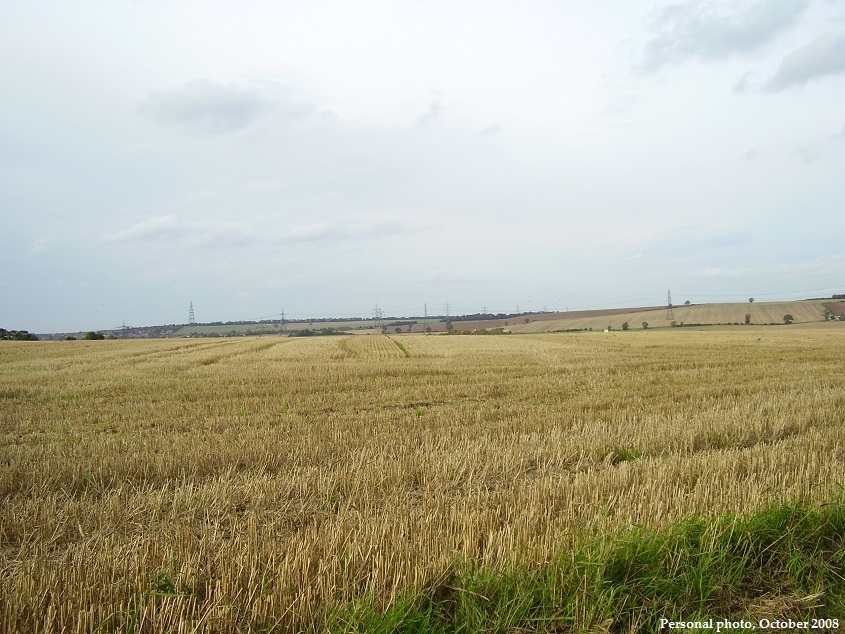Barnsdale 2
In the Gest, Robin tells Little John to:
| walke up to the Saylis |
| And so to Watlinge Strete |
| And wayte after some unketh gest |
| Up chaunce ye may them mete |
When he, Much, and Scarloke ‘loked in to Bernysdale’, they were looking at Wentbridge.
Looking north, towards Barnsdale Bar, where the Great North Road forked into two branches. The one leading through Pontefract and Wetherby to the extreme north, (called Watling Street in the 13th century) followed the course of the old Roman road, (A639, still known as ‘Roman Ridge’) the precursor of the Great North Road running from London via Lincoln to York, which was given the Saxon name of Ermine Street. In the course of the 13th century there was the newer branch from Barnsdale Bar through Wentbridge to Ferrybridge to which the name ‘Watling Street’ was transferred. From Ferrybridge the route forked north, one road leading to Tadcaster and York, the other rejoining Roman Ridge.(see map) Holt states that it is this newer route which provides the locale for Robin Hood’s activities. In 1433 the whole of the road from Ferrybridge through Barnsdale to Worksop in Nottinghamshire was described as ‘the highway called Watlyngstrete’. (Place-Names of West Riding (P.N.S., XXXVI, 1962), VII, 145; I.D. Margary, Roman Roads in Britain, London, 1967, p. 415) The original of Watling Street appears to have been the ancient Roman road from London to Wroxeter, the modern A5, however the term had since been applied to other stretches of road in various parts of the country.(1)
There is some belief that Barnsdale was once a dense forest that covered a large area of southYorkshire, with abundant game and deer, and used for royal hunting. However as Holt points out: ‘On Jeffery’s map of 1771-2 Barnsdale is shown as heathland with unfenced roads. In his time the park of Skelbrooke was enclosed. There may have also been a warren, for Barnsdale Warren survives as a place name on its southern boundary. But there was no forest or chase. This is not a matter in which local inhabitants or officials would be casual for these terms had a technical sense: ‘forest’ designated an area subject to the forest law. And the forest law was never in force here, whether under the Lacys, the earls of Lancaster or the crown. Indeed there was no royal forest in the immediate neighbourhood. The nearest were Knaresborough to the north and Sherwood to the south. Barnsdale derived its later reputation as a forest from the legend’.(2)
1. This paragraph contains information found in Rymes of Robyn Hood, Dobson and Taylor, pp.22, 307, 308; Robin Hood, Holt, pp. 83, 84, 85.
2. Holt, Robin Hood, p. 85-86.


|
